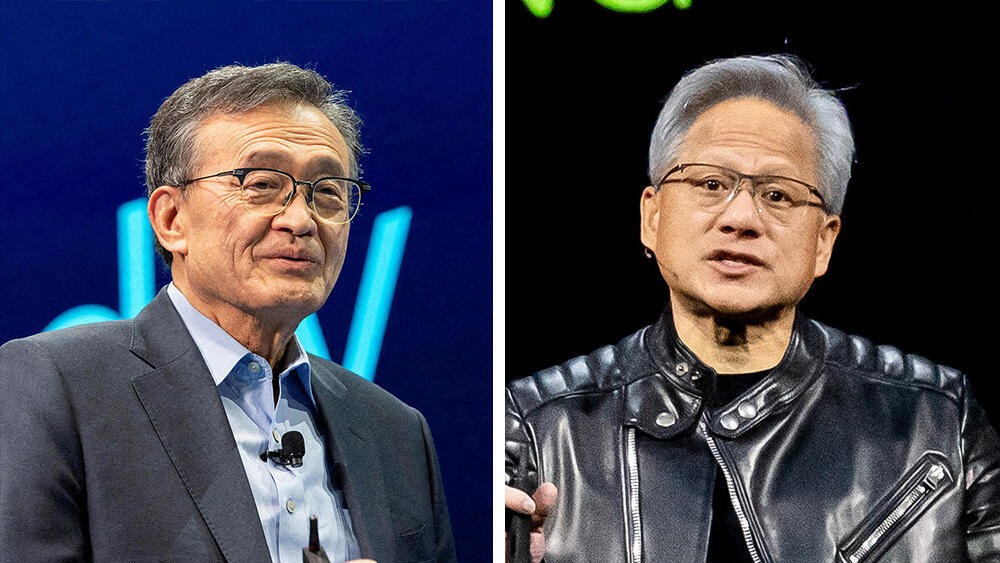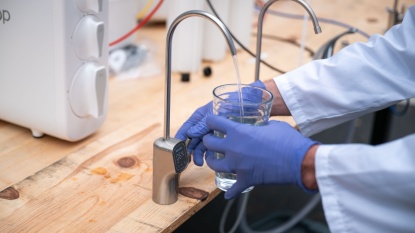How an Israeli desalination giant quietly broke into the Arab world – CTech

Report on IDE Technologies’ Desalination Projects and Alignment with Sustainable Development Goals
Executive Summary
This report examines the operational strategies of Israeli water desalination firm, IDE Technologies, in relation to its projects in the Middle East and North Africa (MENA) region. It highlights the company’s approach to overcoming geopolitical barriers to deliver critical water infrastructure, thereby contributing to several United Nations Sustainable Development Goals (SDGs), most notably SDG 6 (Clean Water and Sanitation). The report also details an ongoing commercial dispute that raises questions regarding governance and partnership ethics, relevant to SDG 16 (Peace, Justice and Strong Institutions) and SDG 17 (Partnerships for the Goals).
Background and Market Context
IDE Technologies specializes in the development, engineering, and operation of advanced water treatment and desalination plants. The MENA region, which constitutes approximately 50% of the global desalination market, presents a significant opportunity for advancing SDG 6. However, historical political boycotts have restricted IDE’s direct access to key markets within this region. To address this challenge and deliver its innovative water solutions, IDE reportedly adopted a unique operational model.
Operational Strategy for SDG Advancement in Restricted Regions
Information indicates that for the past decade, IDE utilized a Swiss-owned entity, Swiss Water (SW), as a front company to participate in public tenders in countries that boycott Israeli firms. This white-label structure was designed to facilitate the implementation of essential water infrastructure projects, directly supporting the achievement of multiple SDGs.
- SDG 6 (Clean Water and Sanitation): The core objective was to provide access to clean water in water-scarce nations.
- SDG 9 (Industry, Innovation, and Infrastructure): The strategy enabled the deployment of Israeli innovation and the construction of resilient infrastructure in new territories.
- SDG 17 (Partnerships for the Goals): It represents a complex, cross-border partnership model aimed at achieving development goals despite political obstacles.
The operational agreement designated a list of “prohibited countries” where SW would operate on behalf of IDE. These included:
- Qatar
- Kuwait
- Saudi Arabia
- Yemen
- Libya
- Algeria
- Tunisia
- Afghanistan
- Pakistan
- United Arab Emirates, Bahrain, Sudan, Oman, and Morocco (prior to the Abraham Accords)
Key Projects and Sustainable Development Impact
Through this arrangement, several high-impact projects were executed, generating significant revenue and contributing to regional development goals. These projects are critical for building sustainable communities (SDG 11) and fostering economic growth (SDG 8).
- The “Red Sea” Project (Saudi Arabia): A major infrastructure initiative in the Middle East, significantly enhancing water security.
- The “Greater Arabian Sea” Project (Pakistan): A vital project addressing water scarcity in a key South Asian nation.
- Projects in Kuwait (Two): Enhanced the nation’s capacity for producing potable water.
- Projects in Oman (Two): Completed prior to the 2020 Abraham Accords, these projects bolstered the country’s water infrastructure.
Commercial Dispute and Governance Implications
A commercial dispute has arisen between IDE and SW, leading to legal proceedings in the UK’s Commercial Court. This conflict underscores the governance challenges inherent in such operational models, touching upon the principles of SDG 16 (Peace, Justice and Strong Institutions).
Official Statements
- IDE Technologies: IDE asserts that it operates according to the highest international standards. It characterizes the dispute as a business disagreement with a company facing insolvency and alleges the counterclaim is an improper tactic. IDE also suggests that vested interests in Israel are collaborating with the Swiss company to undermine its business prospects.
- Swiss Water (SW): The company, through its legal representatives, expressed surprise that IDE chose to address the matter publicly. It affirmed its commitment to pursuing its claims through the appropriate legal channels rather than the media, citing IDE’s alleged disregard for its client’s rights.
Analysis of Sustainable Development Goals in the Article
1. Which SDGs are addressed or connected to the issues highlighted in the article?
The article highlights issues and activities that are directly connected to several Sustainable Development Goals (SDGs). The core subject is the provision of water desalination technology to water-scarce regions, which touches upon goals related to water, infrastructure, innovation, and international partnerships.
- SDG 6: Clean Water and Sanitation: This is the most prominent SDG addressed. The entire business of the company IDE revolves around “water treatment solutions, including the development, engineering, construction, and operation of desalination plants.” This work directly contributes to increasing the availability of fresh water in countries that face water scarcity.
- SDG 9: Industry, Innovation, and Infrastructure: The article discusses the construction of large-scale desalination plants, such as the “Red Sea” project in Saudi Arabia. These plants represent significant, resilient infrastructure projects. IDE’s business is based on providing advanced technology, which aligns with the innovation aspect of this goal.
- SDG 17: Partnerships for the Goals: The article’s central theme is the complex partnership model created to overcome political barriers. It describes a partnership between an Israeli technology company (IDE), a Swiss “front company” (Swiss Water), and various governments or entities in “prohibited countries” to implement critical projects. This demonstrates a multi-stakeholder partnership aimed at transferring technology and achieving development objectives.
2. What specific targets under those SDGs can be identified based on the article’s content?
Based on the activities described, several specific SDG targets can be identified:
- Under SDG 6 (Clean Water and Sanitation):
- Target 6.1: “By 2030, achieve universal and equitable access to safe and affordable drinking water for all.” The desalination projects in countries like Saudi Arabia, Pakistan, and Kuwait are explicitly designed to increase the supply of fresh water, a fundamental step toward achieving access to safe drinking water for their populations.
- Target 6.4: “By 2030, substantially increase water-use efficiency across all sectors and ensure sustainable withdrawals and supply of freshwater to address water scarcity…” By providing a new source of freshwater through desalination, IDE’s work helps countries address water scarcity without over-exploiting traditional water sources.
- Target 6.a: “By 2030, expand international cooperation and capacity-building support to developing countries in water- and sanitation-related activities and programmes, including… desalination…” The article is a direct example of an Israeli company providing advanced desalination technology and operational expertise to other nations, which constitutes a form of international cooperation and capacity-building.
- Under SDG 9 (Industry, Innovation, and Infrastructure):
- Target 9.1: “Develop quality, reliable, sustainable and resilient infrastructure… to support economic development and human well-being…” The construction of large-scale desalination plants is a clear example of developing critical and resilient water infrastructure necessary for the well-being and economic stability of the mentioned countries.
- Under SDG 17 (Partnerships for the Goals):
- Target 17.6: “Enhance North-South… international cooperation on and access to science, technology and innovation…” The article describes a mechanism, albeit covert, for transferring advanced Israeli desalination technology (from the “North” in a technological sense) to countries in the Middle East and North Africa.
- Target 17.17: “Encourage and promote effective public, public-private and civil society partnerships…” The projects mentioned were part of “public tenders,” indicating that the operational model was a form of public-private partnership, where a private entity (IDE/Swiss Water) contracts with a public entity to build and operate infrastructure.
3. Are there any indicators mentioned or implied in the article that can be used to measure progress towards the identified targets?
The article, being a news report on a business dispute, does not explicitly mention official SDG indicators. However, it contains information that can serve as proxies or qualitative indicators for measuring progress:
- Number and Scale of Projects: The article mentions several specific projects: the “Red Sea” project in Saudi Arabia, the “Greater Arabian Sea” project in Pakistan, two projects in Kuwait, and two in Oman. The number and scale of these infrastructure projects serve as a direct indicator of investment in water infrastructure (relevant to SDG 6 and SDG 9).
- Financial Investment: The text states that the contracts were worth “tens of millions of dollars per project.” This financial figure is an indicator of the amount of financial resources mobilized for water-related infrastructure and international cooperation (relevant to Target 6.a and SDG 17).
- Geographic Scope of Cooperation: The article lists a wide range of countries where this model was intended to operate, including “Qatar, Kuwait, Saudi Arabia, Yemen, Libya, Algeria, Tunisia, Afghanistan, and Pakistan,” as well as the UAE, Bahrain, and Oman before the Abraham Accords. This list indicates the broad geographic scope of the technological cooperation, a key aspect of SDG 17.
- Technology Transfer: The core of the business arrangement was that “IDE provided the technology and executed the projects.” This direct transfer and implementation of advanced desalination technology is a qualitative indicator of progress towards Target 17.6 on sharing technology and innovation.
4. Summary Table of SDGs, Targets, and Indicators
| SDGs | Targets | Indicators (as implied in the article) |
|---|---|---|
| SDG 6: Clean Water and Sanitation |
|
|
| SDG 9: Industry, Innovation, and Infrastructure |
|
|
| SDG 17: Partnerships for the Goals |
|
|
Source: calcalistech.com

What is Your Reaction?
 Like
0
Like
0
 Dislike
0
Dislike
0
 Love
0
Love
0
 Funny
0
Funny
0
 Angry
0
Angry
0
 Sad
0
Sad
0
 Wow
0
Wow
0
















































/environment-climate-change-and-health-(ech)/water-sanitation-hygiene-and-health-(wsh)/landfill-tuvalu-36092.tmb-1200v.jpg?sfvrsn=5c21fe40_1#)

.jpg.webp?itok=0ZsAnae9#)

























